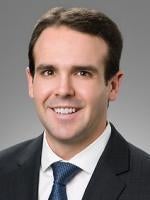In Alfredo Sanchez v. Miguel Martinez, the Court of Appeal, Third Appellate District, held that although an employee who is not authorized and permitted to take a paid 10-minute rest break in compliance with California law may assert a claim for either unpaid wages or seek one additional hour of pay (i.e., a rest break premium) under Labor Code Section 226.7, the employee cannot recover damages under both theories. All California employers will find this case instructive, as it may also provide a basis to argue against similar “double recovery” and/or “stacking” of penalties predicated on other Labor Code violations.
Factual and Procedural Background
In Sanchez v. Martinez, a group of farm laborers who pruned grapes and were compensated on a piece-rate for each grape vine pruned, filed a wage-hour lawsuit alleging various claims including an alleged failure to have been permitted paid rest breaks. The laborers contended they were not paid their piece-rate — or any wage rate — during their rest breaks. In the lawsuit, they pursued a theory of double-recovery, seeking both minimum wage damages for the actual unpaid break time and an additional rest break premium under Section 226.7. Following a trial on the merits and an initial judgment in favor of the employer, an appeal and a partial reversal by the Court of Appeal as to the rest break claim, and then on remand a finding in the laborers’ favor, the trial court awarded the laborers $416 in damages and $17,775 in civil penalties. The trial court awarded these damages solely based upon Section 226.7 and reasoned that the additional hour of pay was the only permissible compensatory remedy for the allegedly non-compliant rest breaks. Both parties appealed.
The Court of Appeal’s Decision
In a nuanced opinion, the Court of Appeal first pronounced that both theories of recovery were independently viable. More specifically, the laborers sought compensatory damages under both California’s minimum wage law for the actual time they were allegedly unpaid during rest breaks, and also sought a premium for each allegedly non-compliant rest break under Section 226.7. In reaching its holding, the Court synthesized two precedential cases (Bluford v. Safeway Inc., 216 Cal. App. 4th 864 (2013) (employees paid on a piece-rate basis must still be compensated for time spent on rest breaks) and Murphy v. Kenneth Cole Productions, Inc., 40 Cal.4th 1094 (2007)), and relied on the revised piece-rate statute, Section 226.2, which became effective in 2016. The statute includes a safe harbor provision that provided employers a means to avoid liability for Section 226.7 actions based solely on the nonpayment of wages during rest periods prior to the enactment of the statute.
In analyzing the statute, the Court reasoned that the Legislature contemplated that Section 226.7 actions could be asserted based upon an employer’s failure to compensate employees for non-productive rest break time. The Court also confirmed that the laborers’ theory of recovery under the State’s minimum wage laws was equally viable. Relying on Bluford v. Safeway, Inc. the Court noted that “rest periods must be separately compensated in a piece-rate system,” while also acknowledging that the Bluford decision had been modified when it was codified. Bluford, 216 Cal.App.4th at 872; see also Labor Code Section 226.2.
Analysis of the Potential “Double Recovery”
Even though the Court found that both theories of recovery were legally viable, it determined that each was a separate compensatory remedy predicated upon the same alleged harm. Therefore, the well-established rule against “double recovery” precluded the laborers from recovering both the unpaid minimum wages and the one hour of premium pay. The Court tethered its conclusion to the California Supreme Court’s holding in Murphy that Section 226.7’s “additional hour of pay” is akin to a wage and not a penalty. Accordingly, much like a vintner choosing between white wine and red wine, the laborers would have to choose either their actual damages (i.e., the alleged unpaid time) or the additional hour of pay under Section 226.7.
Here, the trial court had awarded damages solely based upon Section 226.7 and, therefore, the damages award was based upon the higher additional $8.00 per hour of premium pay rather than the fractional actual damages for the alleged unpaid rest break time ($8.00 x one-third of an hour, or $2.67, for each day that Martinez allegedly failed to provide paid rest periods). Although the laborers were not permitted to choose their preferred recovery method in the trial court – i.e., either the higher premium pay v. the smaller fractional actual damages – the Court reasoned that the trial court’s selection of the higher premium pay award was not reversible error because it maximized the laborers’ recovery and they were not prejudiced by the choice.
Employer Takeaways
California employers should note two takeaways from this case. First, any employer utilizing a piece-rate system should review its policies and practices to ensure it is complying with the complex piece-rate and rest break rules. Second, employers facing kitchen sink wage-hour lawsuits that potentially seek double recovery or the stacking of penalties may be able to argue for the reduction of potential exposure based upon the no double recovery rule set forth in Sanchez v. Martinez.




 />i
/>i
